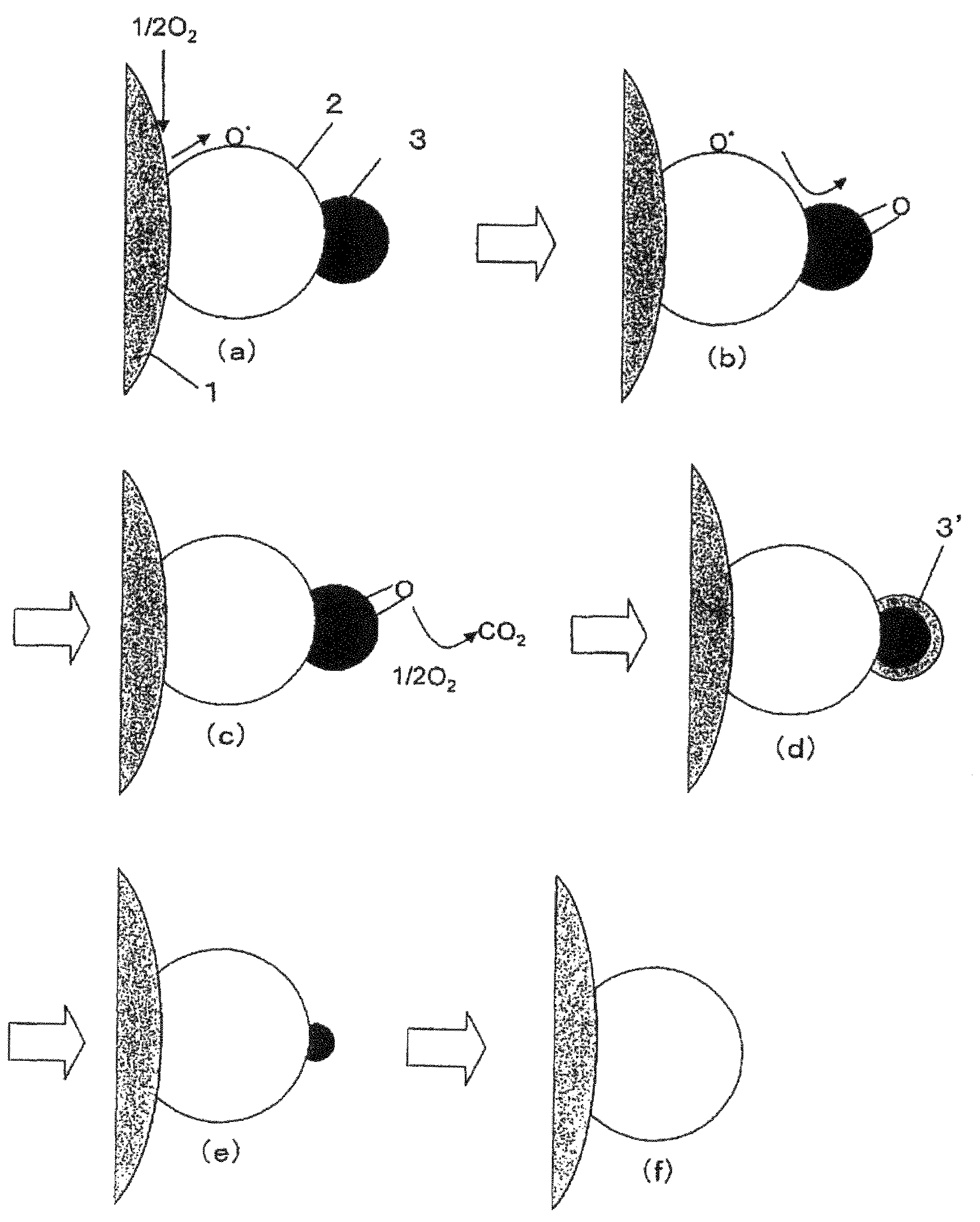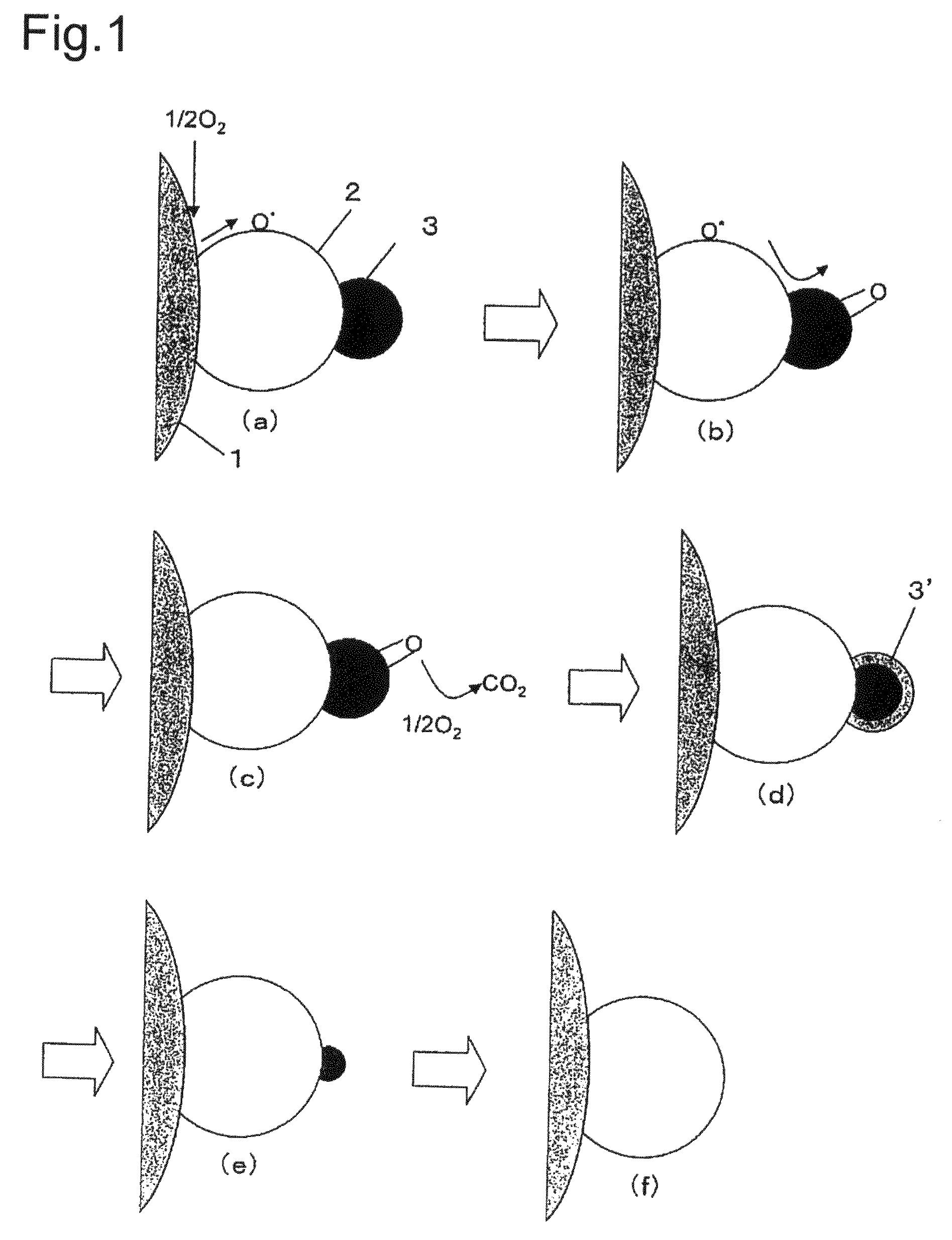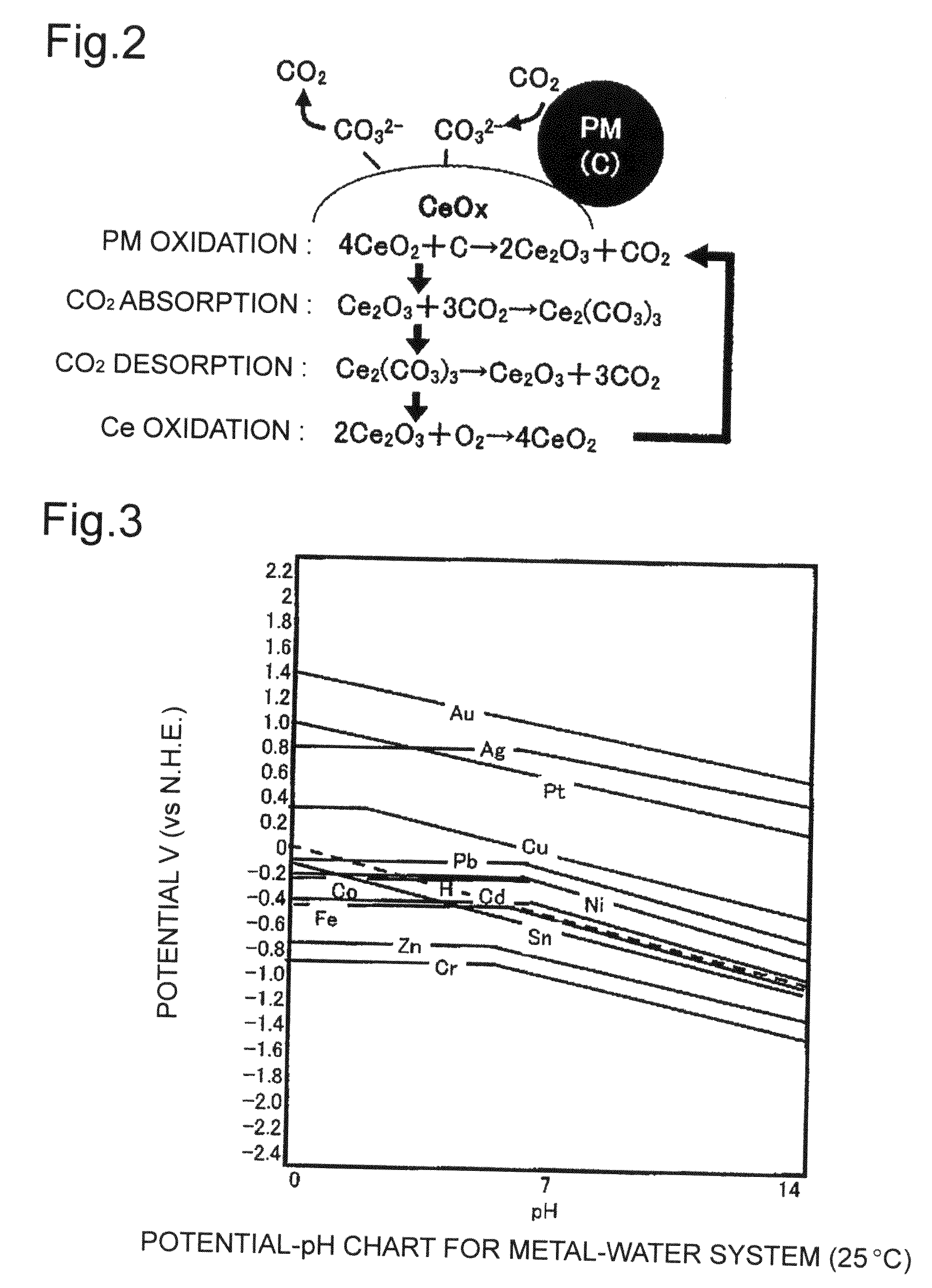Composite material, composite material substrate, composite material dispersed fluid, and manufacturing methods thereof
a technology of composite materials and dispersed fluid, which is applied in the direction of catalyst activation/preparation, metal/metal-oxide/metal-hydroxide catalysts, chemical/physical processes, etc., can solve the problem of not being able to oxidize a carbon-containing component, and not being able to obtain the activity of the components of the core portion in the partial oxidation catalyst, etc. problem, to achieve the effect of suppressing the generation of trivalent cerium carbon
- Summary
- Abstract
- Description
- Claims
- Application Information
AI Technical Summary
Benefits of technology
Problems solved by technology
Method used
Image
Examples
examples
[0165]The present invention will be described below more concretely based on Examples and Comparative Examples. However, the present invention will not be limited only to the following Examples.
[0166]Although the composite materials made of CeO2 and Ag are obtained in the following Examples, it is possible to select a different combination of materials that constitute a composite material in order to obtain such a desired composite material based on the concept to be described below, for example.
[0167]Specifically, metal oxides containing valence variable elements and precursors thereof are firstly sorted out depending on usages. For example, when selecting CeO2 for use in the oxidation catalyst as in the Examples, reduction potential of Ce(OH)3 serving as the precursor of CeO2 is grasped. Moreover, types of the metal are selected in response to the usages. Concerning the metal, deposition potential thereof is easily acquired from various documents. Here, it is preferable to select ...
examples 1 to 12
[0172]Nitrate solutions containing Ce and Ag were prepared by setting content percentages (mol %) of Ag relative to a total amount of Ce and Ag to 25 mol % (Example 1), 30 mol % (Example 2), 35 mol % (Example 3), 40 mol % (Example 4), 45 mol % (Example 5), 50 mol % (Example 6), 55 mol % (Example 7), 60 mol % (Example 8), 65 mol % (Example 9), 70 mol % (Example 10), 75 mol % (Example 11), and 80 mol % (Example 12), respectively. For instance, in Example 8, a solution was prepared by dissolving 50.49 g of Ce(NO3)3.6H2O and 29.63 g of AgNO3 into 120 mL of water. Next, ammonia water containing an amount of NH3 necessary for precipitating the nitrates was prepared. For instance, in Example 8, ammonia water was prepared by diluting 35.6 g of 25 percent ammonia water with 100 g of water. Then, the nitrate solution was blended while agitating the ammonia water (inverse precipitation) or, alternatively, the ammonia water was blended while agitating the nitrate solution (precipitation). In ea...
examples 13 to 22
[0198]CeO2—Ag-additive compositions (composite materials) containing Ag, ceria and an additive component were prepared by reverse precipitation similarly to Example 8 except that nitrate solution containing Ce, Ag and the additive component were prepared by setting content percentages (mol %) of the additive component relative to a total amount of Ce and the additive component to La 5 mol % (Example 13), La 10 mol % (Example 14), La 20 mol % (Example 15), Nd 5 mol % (Example 16), Nd 10 mol % (Example 17), Nd 20 mol % (Example 18), Pr 10 mol % (Example 19), Fe 10 mol % (Example 20), Zr 10 mol % (Example 21), and Al 10 mol % (Example 22), respectively. For instance, in Example 14, a solution was firstly prepared by dissolving 50.46 g of Ce(NO3)3.6H2O, 5.59 g of La(NO3)3, and 29.62 g of AgNO3 into 120 mL of water. Next, ammonia water was prepared by diluting 38.21 g of 25 percent ammonia water with 100 g of water. Then, the solution prepared as described above was put in while agitatin...
PUM
| Property | Measurement | Unit |
|---|---|---|
| Temperature | aaaaa | aaaaa |
| Temperature | aaaaa | aaaaa |
| Fraction | aaaaa | aaaaa |
Abstract
Description
Claims
Application Information
 Login to View More
Login to View More - R&D
- Intellectual Property
- Life Sciences
- Materials
- Tech Scout
- Unparalleled Data Quality
- Higher Quality Content
- 60% Fewer Hallucinations
Browse by: Latest US Patents, China's latest patents, Technical Efficacy Thesaurus, Application Domain, Technology Topic, Popular Technical Reports.
© 2025 PatSnap. All rights reserved.Legal|Privacy policy|Modern Slavery Act Transparency Statement|Sitemap|About US| Contact US: help@patsnap.com



